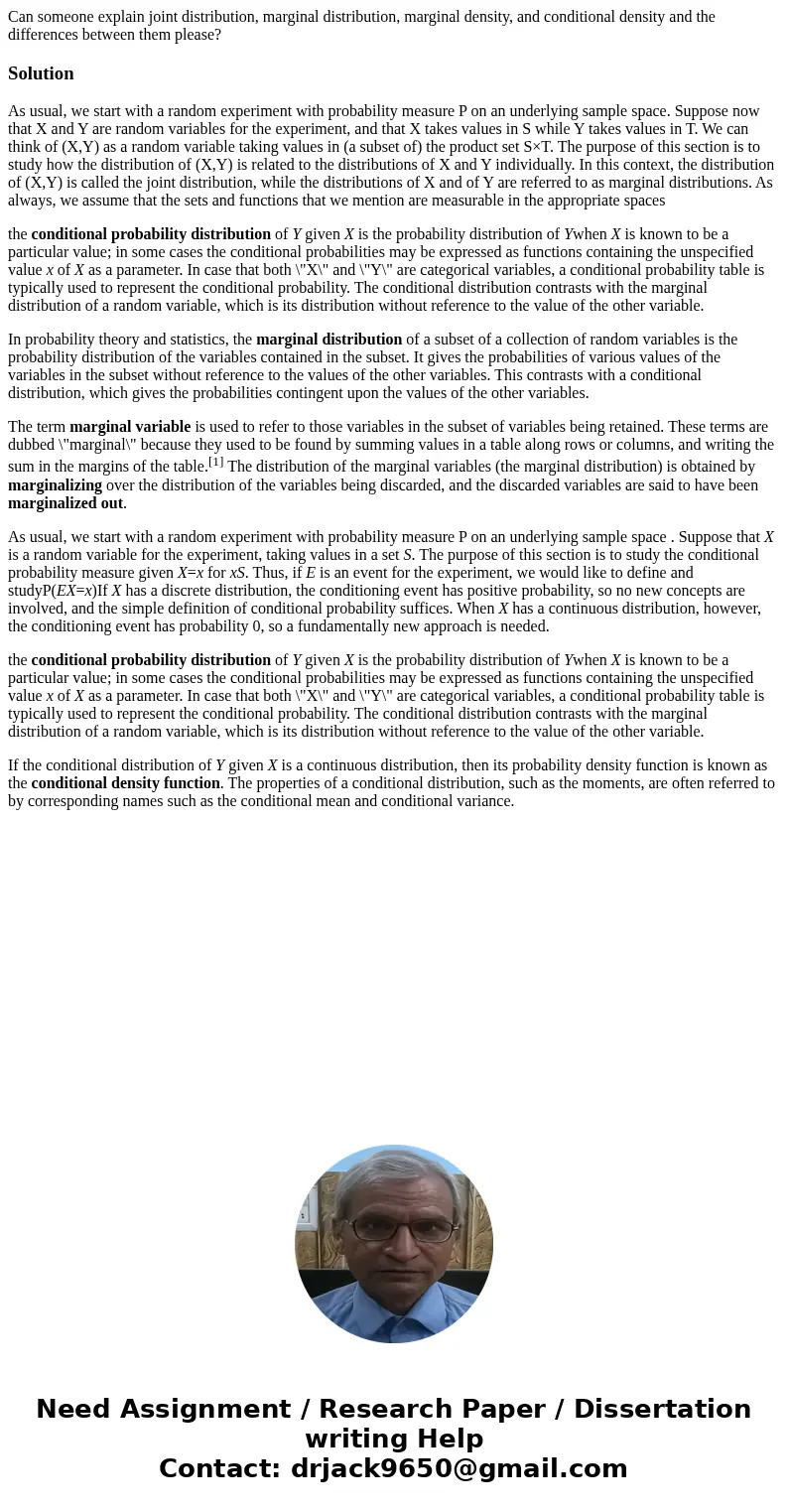Can someone explain joint distribution marginal distribution
Can someone explain joint distribution, marginal distribution, marginal density, and conditional density and the differences between them please?
Solution
As usual, we start with a random experiment with probability measure P on an underlying sample space. Suppose now that X and Y are random variables for the experiment, and that X takes values in S while Y takes values in T. We can think of (X,Y) as a random variable taking values in (a subset of) the product set S×T. The purpose of this section is to study how the distribution of (X,Y) is related to the distributions of X and Y individually. In this context, the distribution of (X,Y) is called the joint distribution, while the distributions of X and of Y are referred to as marginal distributions. As always, we assume that the sets and functions that we mention are measurable in the appropriate spaces
the conditional probability distribution of Y given X is the probability distribution of Ywhen X is known to be a particular value; in some cases the conditional probabilities may be expressed as functions containing the unspecified value x of X as a parameter. In case that both \"X\" and \"Y\" are categorical variables, a conditional probability table is typically used to represent the conditional probability. The conditional distribution contrasts with the marginal distribution of a random variable, which is its distribution without reference to the value of the other variable.
In probability theory and statistics, the marginal distribution of a subset of a collection of random variables is the probability distribution of the variables contained in the subset. It gives the probabilities of various values of the variables in the subset without reference to the values of the other variables. This contrasts with a conditional distribution, which gives the probabilities contingent upon the values of the other variables.
The term marginal variable is used to refer to those variables in the subset of variables being retained. These terms are dubbed \"marginal\" because they used to be found by summing values in a table along rows or columns, and writing the sum in the margins of the table.[1] The distribution of the marginal variables (the marginal distribution) is obtained by marginalizing over the distribution of the variables being discarded, and the discarded variables are said to have been marginalized out.
As usual, we start with a random experiment with probability measure P on an underlying sample space . Suppose that X is a random variable for the experiment, taking values in a set S. The purpose of this section is to study the conditional probability measure given X=x for xS. Thus, if E is an event for the experiment, we would like to define and studyP(EX=x)If X has a discrete distribution, the conditioning event has positive probability, so no new concepts are involved, and the simple definition of conditional probability suffices. When X has a continuous distribution, however, the conditioning event has probability 0, so a fundamentally new approach is needed.
the conditional probability distribution of Y given X is the probability distribution of Ywhen X is known to be a particular value; in some cases the conditional probabilities may be expressed as functions containing the unspecified value x of X as a parameter. In case that both \"X\" and \"Y\" are categorical variables, a conditional probability table is typically used to represent the conditional probability. The conditional distribution contrasts with the marginal distribution of a random variable, which is its distribution without reference to the value of the other variable.
If the conditional distribution of Y given X is a continuous distribution, then its probability density function is known as the conditional density function. The properties of a conditional distribution, such as the moments, are often referred to by corresponding names such as the conditional mean and conditional variance.

 Homework Sourse
Homework Sourse